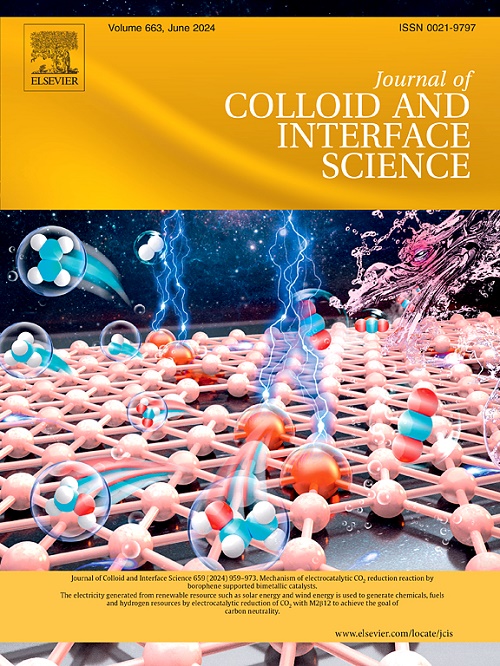Polyacrylonitrile-supported symmetrical configuration pyridine bridged bi-iron phthalocyanine nanofibers for efficient degradation of carbamazepine in the presence of peroxymonosulfate
IF 9.4
1区 化学
Q1 CHEMISTRY, PHYSICAL
引用次数: 0
Abstract
In this study, the 4-aminopyridine (Py) was employed to link with terephthaloyl chloride (TPC) through amide bonding to generate the symmetric ligand Py-TPC, and the iron phthalocyanine (FePc) was axially coordinated with Py-TPC to synthetic the composite catalyst FePc-Py-TPC. By introducing Py-TPC, the π-π conjugated stack structure within phthalocyanine molecules was disrupted and more active sites were exposed. FePc-Py-TPC was dispersed in polyacrylonitrile (PAN) through electrospinning to obtain FePc-Py-TPC/PAN nanofibers, which solved the problem of difficult recycling and utilization of powder catalysts. FePc-Py-TPC/PAN can effectively activate peroxymonosulfate (PMS) at room temperature, and the removal rate of carbamazepine (CBZ) approaches 100 % within 40 min. After five recycles for CBZ degradation over the FePc-Py-TPC/PAN/PMS system, the removal ratios of CBZ remained at 90 %. ![]() O2− is the main active radical, SO4
O2− is the main active radical, SO4![]() −,
−, ![]() OH, and 1O2 play a secondary role. Six intermediate products and two final products of CBZ were identified by ultra-performance liquid chromatography and high-definition mass spectrometry, and the possible degradation pathways were speculated. All CBZ and the aromatic intermediates were eventually converted into small acids.
OH, and 1O2 play a secondary role. Six intermediate products and two final products of CBZ were identified by ultra-performance liquid chromatography and high-definition mass spectrometry, and the possible degradation pathways were speculated. All CBZ and the aromatic intermediates were eventually converted into small acids.

聚丙烯腈支撑的对称构型吡啶桥接双铁酞菁纳米纤维在过一硫酸盐存在下高效降解卡马西平
本文章由计算机程序翻译,如有差异,请以英文原文为准。
求助全文
约1分钟内获得全文
求助全文
来源期刊
CiteScore
16.10
自引率
7.10%
发文量
2568
审稿时长
2 months
期刊介绍:
The Journal of Colloid and Interface Science publishes original research findings on the fundamental principles of colloid and interface science, as well as innovative applications in various fields. The criteria for publication include impact, quality, novelty, and originality.
Emphasis:
The journal emphasizes fundamental scientific innovation within the following categories:
A.Colloidal Materials and Nanomaterials
B.Soft Colloidal and Self-Assembly Systems
C.Adsorption, Catalysis, and Electrochemistry
D.Interfacial Processes, Capillarity, and Wetting
E.Biomaterials and Nanomedicine
F.Energy Conversion and Storage, and Environmental Technologies

 求助内容:
求助内容: 应助结果提醒方式:
应助结果提醒方式:


